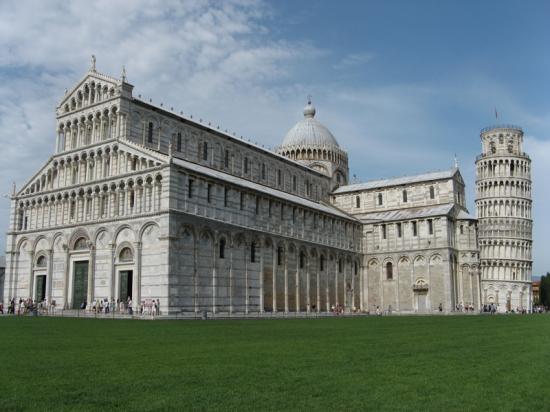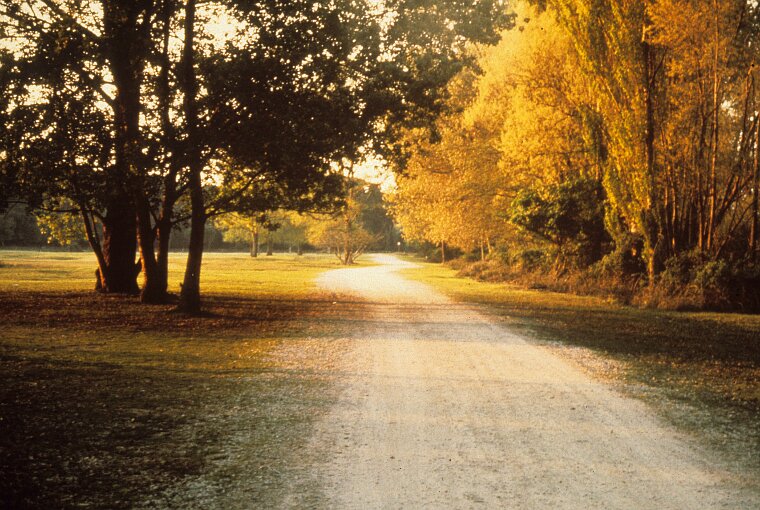Interesting Facts - Pisa
There is a lot to be said about Pisa, especially for its unique spirit.
Let's start from its monuments:
SQUARE OF MIRACLES

Decentrata rispetto al centro della citta', fu costruita negli anni di maggior splendore della Repubblica Marinara .
It is out of the city centre and was built during the years of greatest splendour of the Maritime Republic. Its realization was planned in a new north area, because the city centre with all its medieval alleys could not contain it due to the grandiosity of the project. Later on the well preserved city-centre was destroyed by Florentines and by others: see for example Cavalieri Square, Largo Ciro Menotti and the Palace of Justice.
The 4 marble monuments with their marble whiteness sprang up like mushrooms on a green lawn.
Well-known all over the world, the Square deserves a photo and not so many explanations.
You could also pay interesting visits to Arno River, Cavalieri Square, where you can breath the atmosphere created by thousands of young students from all over Italy and from abroad, and to the famous Vettovaglie Square or Old Market Square.
SAN ROSSORE NATURAL PARK

Gia' Tenuta Reale e poi Presidenziale e' il polmone verde di Pisa.
It was in the past Royal Estate and then became Presidential Estate, nowadays it can be considered the green lung of Pisa.
A curiosity about it: in around 1650 Ferdinando II de Medici, , introduced dromedaries in the park. In a few years their number increased and became hundreds, so they were exploited for agricultural use.
They disappeared during the II World War because of famine.
Nowadays the administration would like to reintroduce them.
THE MEDICEAN DUCTS
Historic and architectural aspects
The Medicean aqueduct runs for 6 km from Asciano to Pisa, with its arches of different size and height. It supplies water coming directly from the natural sources in the Pisan hills, and it is reserved for drinking and cooking use.
Tratzi, expert of the history of Lungomonte, wrote that the Pisans usually suffered from impairment because they were used to drink dirty water. On the contrary the citizens of Asciano had a very good health and went to Pisa to sell their water, this is the reason why the Medici family thought to build the aqueduct at the beginning of 1600, that is to bring water from Asciano hills directly to Pisa.
For its building the stones of Asciano Castle were used and the bricks were fired in the two existing furnaces, one close to Asciano and the other on the midway, the so-called Saragone Furnace, and that is exactly the place where the B&B was built.
In the Pisan State Archive there is an engraving illustrating Francesco de Medici who commissions the building of the aqueduct, that his father had already planned.
It was an important work especially for its social value, because it supplied Pisa with a healthy and modern system of water provision
Its building started in around 1588 and completed in 1613.
It has 954 arches running for 6 km and a channel on the top where water flows.
It is a rare example of well preserved architecture.
Nowadays, it is considered a meeting place where the Pisans go for walking, jogging and playing with benches and fountains.
Asciano Pisano Water

This water is well known for its purity and perfect drinkability. It is water suitable to all organisms even for the most delicate thanks to its lightness and digestibility. This the reason why formerly it constituted one of the marvels of the city.
This water is one of the most perfect in Europe. In the last century it was considered one of the most perfect from a chemical point of view and had been subject matter of research of scholars and historians.
In his Essay on 'Bagni di Pisa',printed in Frankfurt in 1602, Mercuriale wrote: "Inter Ferdinandi Hetruriae magi ducis opera prope divina illud in urbemPisanam ex proximis montibus per acquaeductus lateritios corrivare mandaret".
Antonio Cocchi, a medicine scholar, wrote: "the city of Pisa has drinkable water which does not compare to any others in the world for its goodness, and perhaps exceeds the most famous".
In the table of the monographic note by Boutron and Boudet it is shown that of about 130 examined waters from France, Italy, Germany, Spain, Algeria etc., only 7 are less hard than that of Pisa.
(Bibliography: Review Journal of information of the Municipality of Pisa, volume 9 to 10 September-October 1967).
Our B & B has the privilege to be one of the few points of distribution of this water.
They are absolutely proud to be Pisan by birth or choice, and first of all to be Ghibellines, and then for other 20 reasons:
1- Miracles Square with the Leaning Tower, the Cathedral, the Baptistery and the Old Cemetery.
2- The other leaning bell towers (San Nicola and San Michele) and many other Romanesque Churches.
3- The Arno river flowing between Tramontana and Mezzogiorno.
4- The opportunity of sunbathing on the embankment of the riversides and enjoying wonderful sunsets.
5- The old city center with the Ponte di Mezzo, Borgo Stretto and Borgo Largo, Cavalieri Square.
6- The Natural Park of San Rossore
7- Three important Universities: The Public University, The Scuola Normale and The Sant'Anna.
8- The great Cisanello General Hospital, hospital of high national importance.
9- The National Research Center: CNR
10- Its antique history as Maritime Republic
11- Marina di Pisa: the sea and its rocks
12- The Luminaria of Saint Ranieri
13- The mural painting by Haring
14- The pisan vernacular
15- The Medicean ducts and the water from Asciano
16- The Game of the Bridge
17- Vettovaglie Square
18- Pisan cooking: elver with the sage, Cecina (salted chickpeas pie) of Montino, the donuts by Lilly, the Pisan mucco (a Native cow), the squids with chard
19- Pera Square and its restaurants
20- Volterra hills, the Hypogeum and the wines of Terricciola, The Theatre of Silence by Andrea Bocelli
21- It was chosen by D'Annunzio, Leopardi, Byron, Shelley, Liszt and many others.